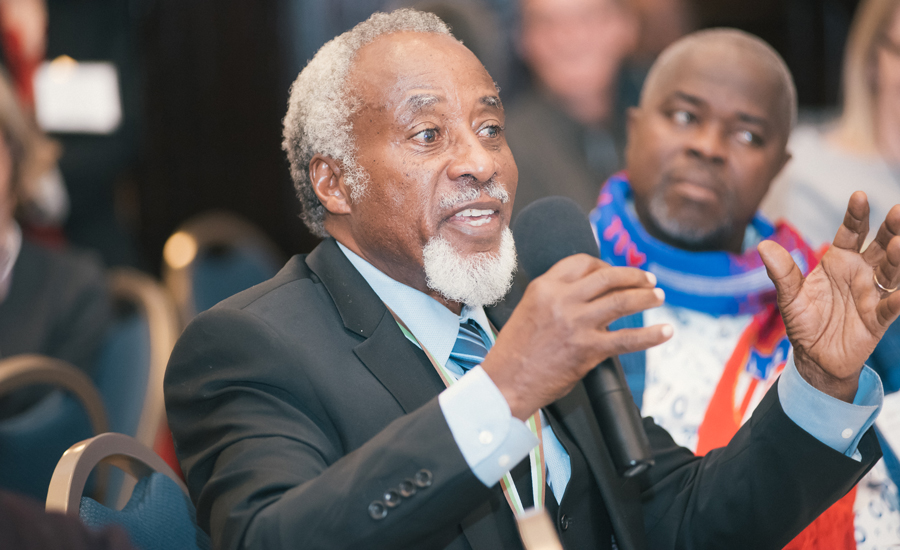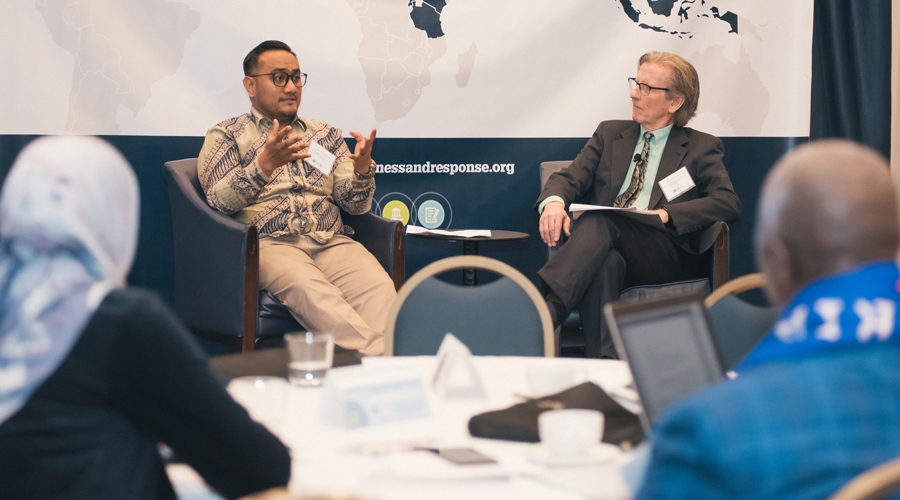DAI Global Health Event Showcases the USAID P&R Legacy: Governments Better Equipped to Control Infectious Disease
March 22, 2019
The U.S. Agency for International Development (USAID) launched its Preparedness and Response (P&R) project five years ago to help select countries tackle deadly infectious diseases. In part because six in 10 infectious diseases in humans are spread from animals, P&R brought together country leaders in the human, animal, and environmental health sectors. Together, they built national One Health platforms to prepare, detect, and respond to disease outbreaks using a multisectoral approach.
Today, these 16 countries—among the world’s most vulnerable to disease—are better prepared to respond to outbreaks of avian influenza, rabies, Ebola, and other diseases emerging within their borders capable of infecting human and animal populations, claiming lives, and costing millions of dollars in domestic and international emergency resources.
The P&R project’s results and lessons were presented March 21 at Improving Global Health Security Through One Health Platforms: The Journey to Self-Reliance, an event at the National Press Club in Washington, D.C., hosted by USAID health experts and DAI Global Health. The event featured representatives from Indonesia, Liberia, and the West Africa and East Africa regions, who shared how USAID assistance helped create or strengthen their national One Health platforms.

P&R Africa Regional Director Andrew Kitua at the March 21, 2019 event; in the background is Sonpon Sieh,
One Health Lead for the National Public Health Institute of Liberia. Photo: Tina dela Rosa.
Chris LeGrand, President of DAI Global Health, in closing remarks said institutional-level progress can seem slow but eventually becomes tangible, especially to the individuals in P&R’s 16 client countries now working together. LeGrand thanked those local and government officials, P&R partners Palladium and TRG, regional partners Fondation Merieux and AFENET, and USAID colleagues.
“These 16 countries represent a diverse group with their own unique circumstances and needs. But each government recognized the need to prepare for, detect, and respond to disease outbreaks, and each took the lead in building its national One Health platform,” said LeGrand. “Put simply, those countries are now better equipped to keep their citizens safe and play their part in maintaining global health security.”
Presentations at the event included: USAID’s Investments in Emerging Pandemic Threats, the Global Health Security Agenda, Working in Partnership for Improved Global Health Security, and Framing the Way Forward. Focus discussions covered P&R’s work in Indonesia and Liberia and on promoting country ownership of One Health platforms, as well as how these platforms can help create broader multisectoral coordination within countries.

Asfri Rangkuti, left, USAID P&R One Health Technical Advisor for Indonesia, and DAI's Mark Rasmuson, USAID P&R Regional Manager for Southeast Asia. Photo: Tina dela Rosa.
The P&R project set out in 2014 with a goal to catalyze country-led processes to build coordination between human, animal, and environmental health sectors. P&R designed and implemented its activities to be country-led, country-owned and sustainable, balancing diverse country needs, each with different risk profiles and governance structures.
USAID P&R-Client Countries: East Africa—Ethiopia, Kenya, Rwanda, Tanzania, Uganda; West Africa—Cameroon, Cote D’ Ivoire, Guinea, Liberia, Mali, Sierra Leone; Southeast Asia—Bangladesh, Indonesia, Laos, Thailand, Vietnam
For each country, P&R organized its work around: 1) creating national structures that facilitate coordination and broad collaboration, and 2) supporting the growth of national platforms that develop, test, and implement homegrown National Preparedness and Response Plans.
In most countries, P&R supported one local technical advisor to act as a One Health champion. These local experts—adept at navigating complex local political dynamics—catalyzed change by bringing together key decision makers from diverse sectors and stakeholder groups to take action. Additionally, P&R engaged neutral facilitators from the country or region to facilitate meetings and ensure participatory decision making and buy-in that promoted lasting institutional change. P&R empowered its country advisors with training, support, and knowledge sharing.
“Coordination among different sectors, levels of government, and technical dimensions doesn’t ‘just happen’—it’s a practice that requires intentional effort,” said DAI’s Katie Taratus, P&R’s project director. “We designed and implemented a cohesive approach to what makes multisectoral coordination work.”
USAID Senior Public Health Advisor Ricardo Echalar said the agency has seen increasing infectious disease outbreaks and other public health events worldwide that require multisectoral coordination and response within countries.
“It is crucial to see how we can assist these countries to maximize and utilize external resources as well as their own resources—including the private sector and other nontraditional partners—to strengthen their systems for preventing, detecting, and responding to public health threats.”—Ricardo Echalar, USAID Senior Public Health Advisor
“We need to not respond to the past but prepare for the future,” Echalar added. “It’s easier to think about ‘what worked last time,’ but what catches us off-guard are those unknowable public health events. [USAID and partners] need to be more agile, help countries think ahead, and, importantly, listen to countries for what they can contribute toward their own local health security.”
RELATED CONTENT:
Pape Gaye, CEO of DAI Affiliate IntraHealth International, Wins Prestigious Global Health Award
Pape Gaye, the CEO of DAI Global Health affiliate IntraHealth International, has been named winner of the Global Health Champion award by the Triangle Global Health Consortium. Gaye will receive the honor at the Consortium’s annual awards gala on May 7, in recognition of his lifelong commitment to advancing global health.
Read More